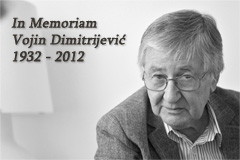The Belgrade Centre for Human Rights (BCHR) hereby alerts to the Serbian Constitutional Court’s disputable Decision (No. IUo-45/2020) discontinuing the review of the constitutionality of the Order Restricting and Prohibiting Movement of Individuals in the Republic of Serbia during the state of emergency and several provisions of the Decree on State of Emergency Measures. In BCHR’s view, the Constitutional Court put forward unconvincing arguments to corroborate its finding that the Order and several provisions of the Decree were not in contravention of the Constitution.
In its review of the constitutionality of Articles 2 and 3 of the impugned Decree (co-signed by the President) by which the Government authorised the Ministry of Internal Affairs to lay down measures derogating from constitutionally guaranteed human rights and freedoms (right to liberty and security and freedom of movement) either independently (Article 3) or with the consent of the Health Ministry (Article 2), the Constitutional Court upheld the following arguments put forward by the Government: that “all measures adopted by the Minister of Internal Affairs had de facto been adopted with the prior consent of the Government, because all the proposed […] measures had been discussed at Government sessions and adopted only after it had consented to them”; that the Order “was essentially an appropriate implementation act which in and of itself is not an aspect of autonomous and autochthonous decision-making” i.e. that it “does not amount to a decision in substantive terms”; and, that the Government was entitled to “task the relevant Minister with concretising specific decisions it had essentially adopted”. In other words, the Constitutional Court held that, in its Order (co-signed by the President), the Government had laid down measures derogating from human rights by the very fact that it authorised the MIA to adopt general acts restricting and prohibiting movement in public areas and that the MIA’s decisions on the duration of the prohibition of movement, all the areas and people it applied to, exceptions from the prohibition, etc. were merely an act by which it “concretised”, “activated” and “operationally implemented” measures derogating from human rights that had been laid down earlier.
The Constitutional Court also held that the measures drastically restricting the movement of people over 65 (and 70 in smaller communities) and refugees and migrants in asylum and reception centres during the state of emergency did not amount to deprivation of liberty because the purpose of the measures (protection from an infectious disease) and their substance (equated with the purpose) did not indicate as much. The Constitutional Court failed to even make mention of the total lockdown of people over 65 (and 70) from 18 to 22 March; that they were allowed to leave their homes only in the early morning hours (first from 3 am to 8 am and then from 4 am to 7 am) – the times they spent mostly buying their groceries, the following 30 days; that they were allowed half-hour walks within a 600 m diameter from their homes three times a week as of 21 April; and, that they were allowed to leave their homes one hour a day as of 25 April.
The duration of the measures, the extent of the restrictions of movement and social contacts imposed on the elderly during the state of emergency are comparable with the degree of restrictions of liberty during house arrest or home imprisonment, which are considered deprivation of liberty measures. The conclusion that the elderly were subjected to a collective measure of deprivation of liberty is also corroborated by the fact that the MIA continuously supervised compliance with the measure and that non-compliance elicited criminal and misdemeanour sanctions (maximum three years’ imprisonment and maximum 150,000 RSD fines respectively). The grounds on which the MIA issued curfew passes were not prescribed, and were thus unforeseeable; the topmost officials publicly said that they would be issued only in exceptional (especially justified) situations.
A similar regime applied to refugees and migrants, who were confined in the asylum and reception centres from 16 March to 14 May 2020. They were allowed to leave them only in circumstances in which individuals under house arrest or home imprisonment are allowed to leave their abodes.
The Constitutional Court’s above reasoning led to its failure to even discuss the proportionality of the measures restricting freedom of movement. In response to the claims by the initiators of the constitutionality review – that the above measures had discriminated against people over 65 (70) – the Constitutional Court said that “the anti-discrimination regime that applied to derogation measures was the one laid down in Article 202(2) not in Article 21 of the Constitution” – age is listed as grounds on which discrimination is prohibited in Article 21 but not in Article 202 of the Constitution.
To recall, under well-established case-law of the European Court of Human Rights, the classification of confinement as deprivation of liberty or restriction of the freedom of movement in domestic law cannot alter the nature of the constraining measures and deprivation of liberty will have been at issue even if the authorities’ aim had been to assist the applicants and ensure their safety (Khlaifia and Others v. Italy, App. No. 16483/12, § 71). The difference between deprivation of and restriction upon liberty is nonetheless merely one of degree or intensity (duration of the restriction, its social effects, degree of supervision, consequences of non-compliance, et al) and not one of nature or substance, reasons for the restriction or its classification in the national order (Guzzardi v. Italy, App. no. 7367/76, § 93).
The Serbian Constitutional Court decision is available in Serbian here.







